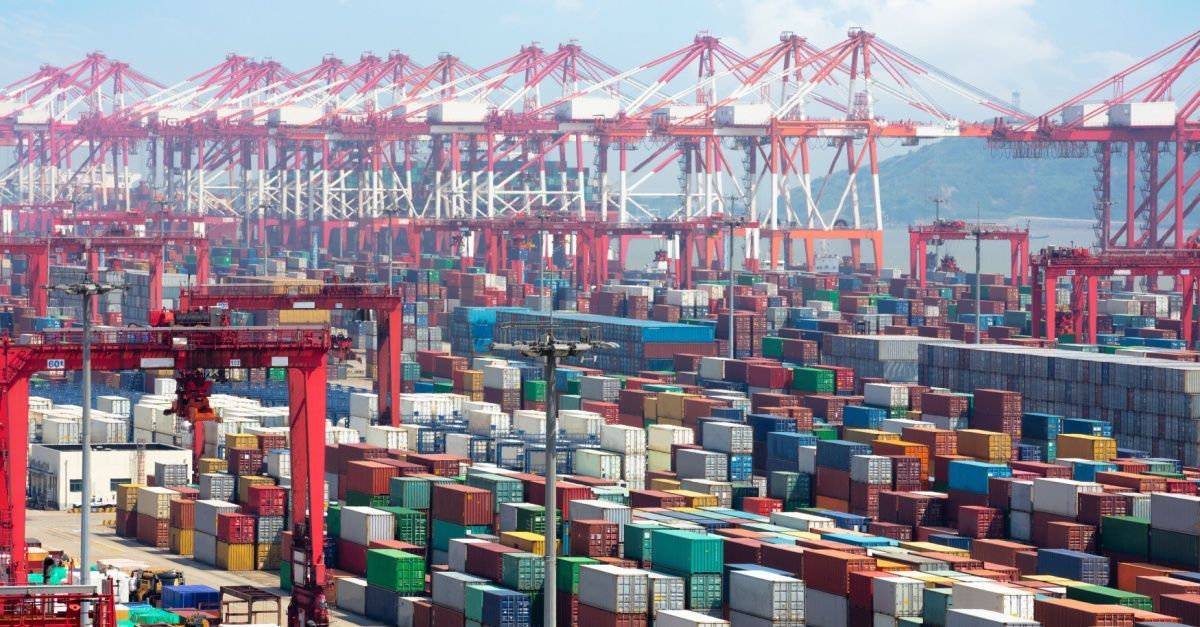Shipping Freight Rates: Spot or Contract?
Blog Post CTA
Shipping Freight Rates: Spot or Contract?
Shipping rates usually fall into two different categories: spot rates and contract rates. A spot rate is a one-time rate offered by a transportation provider to move a shipper’s product from one point to another. A contract rate is a longer-term commitment between a shipper and carrier in which the details are fixed over a period of time for multiple shipments.
Both have substantial reasons to choose them and can suit your specific shipping concerns. Let’s look at both, discussing the pros and cons of each to help determine which is the right type for you. By the end of this blog, you will better understand
freight rates and how to make the best decision for your shipping needs.
Spot rates
As its name implies, this freight rate is for when the deal needs to be done on the spot or relatively soon to get the shipment where it needs to go. A spot rate is often the last-minute option when shipping a product that needs to be quickly delivered. Spot rates can apply to almost every kind of truck shipping — full truckload, less-than-truckload (LTL), dry van, flatbed, and reefer trucks. Because of the volatility of spot rates, shippers use them much less commonly than contract rates.
Spot rates are usually limited to a short period and can be affected by fluctuations in the market. They are often more expensive than contract rates because supply and demand drive the rate. With higher demand comes a higher price. If the demand is lower, then the price will drop. Other factors, such as
fuel prices, can also affect spot rates. For owner-operators and carriers, spot freight rates often help fill up their capacity when they are between contracts or when they have trailer space during backhauls. There are some whose business exclusively deals with spot rates. The shippers who use spot rates are quite often the ones with inconsistent shipping patterns and irregular lanes. They cannot use contract rates because their shipments routinely don’t head to the same destinations, and the other particulars involving their shipment are not always consistent.
Pros
- Immediacy: When you get a random order that needs to be shipped on an atypical lane or at an unusual time, a spot rate is the best way to go because shippers and carriers can make deals right away.
- Flexibility: There are plenty of options when searching for a spot rate, from the type of vehicle to the price to the shipment’s route.
- No long-term deal: Spot rates are for one load only, which keeps you from being locked into an agreement over time.
- Free to negotiate: While time limitations may put you in a bind, you still can deal on a case-by-case basis for just about every other factor. And, if the demand drops over time, you might even save money because you’re not locked into a contract rate.
Cons
- Higher rates: In all likelihood, you will have to pay higher rates because it’s a one-time deal to fill an immediate need--unlike contract rates that usually have a reduced rate because they factor in consistent, recurring volume.
- Volatility: If the economy or other factors shift quickly, you would have to pay higher spot rates each time because there are no price guarantees.
- Accountability and security: With spot rates, there can often be the possibility that you don’t know the transportation partner well or at all. So trusting them with a shipment assumes more risk than dealing with a partner you would regularly use if it were a contract rate. Plus, it is much harder to build a rapport that can lead to bigger things.
- Forecasting is impossible: All businesses have budget plans, but when you don’t know the shipment price in advance, it is difficult to forecast what will be spent on the shipping part of your budget.
- Time spent negotiating: With each spot rate, there will have to be a negotiation. That means shippers might spend quite a bit of time making each deal.
Contract rates
While a spot rate is seen as the immediate need option that can involve uncertainties, a contract rate is the opposite. With a contract rate comes a fixed price and volume guarantee for a specific lane over a set period of time. It is usually done yearly but can last for half or a quarter of the year. Contract rates comprise most of the truck shipping industry rates and are based on an estimated shipping volume at a specific per-mile rate. They are nonbinding and negotiated in a bidding process. After you have agreed upon a rate, it allows you to better forecast and budget for shipping costs.
Contract rates are split into two sections:
- Line-haul rates are the basic costs for a shipment to be transported from Point A to Point B.
- Accessorial rates, meanwhile, help compensate for higher prices if the haul is more costly for the carrier. A typical example of these rates is the fuel surcharge rate. If the fuel rates rise on the Department of Energy’s index for nationwide diesel prices, then this type of rate is likely to be charged.
Pros
- Predictable cost: With the price locked in, you will not get bit by rates that might have huge increases down the road. Also, contract rates allow you to more accurately assess the costs for budget concerns.
- Availability: By going the contract rate route, a company has availability for all loads. There is no need to spend time and resources trying to track down a partner for each and every shipment. It assures priority access to capacity during high-demand periods.
- Familiar, stable partner: The longer and more often your company works with a specific partner, the better they will get to know you, your processes, and your facilities. That usually equates to higher service levels from them to keep the relationship going. It’s almost always easier to mitigate problems when you already know the partner well.
- Damage control: With a partner you have worked with regularly, you will know they are dependable, and there is likely to be a reduced number of damages over choosing multiple carriers using spot rates.
Cons
- Less flexibility: When using a contract rate, you are sticking with one company and following all the stipulations in the contract. If your situation changes in specific ways, the carrier might not offer the agreed-upon rate.
- Change in the market: If a significant market fluctuation results in lower rates, you will not be able to take advantage of it due to existing contract terms.
- Spikes in volume: It could become problematic for your service provider to meet your needs if volume suddenly increases significantly.
- Dependence on volume consistency: If your capacity is different each month, rates for some of your shipments might fall outside the terms of your deal, and you would have to depend on spot shipments to cover the extra loads.
- Lane concerns: If your company’s shipments do not regularly use the same shipping lanes, there might not be able to commit volume to a contract rate for a specific lane.
Determining the Best Option for Your Business
Both spot rates and contract rates have benefits and risks. The decision on which one to choose should best suit your business. If you have relatively consistent factors in your production, such as the volume and timing of your loads and the lanes, then contract rates will most often be your answer. If your company has many factors that fluctuate, be it timing, volume, or distribution lanes, then spot rates are likely the way to go. You can weigh the pros and cons mentioned above to help you make that choice.
You also have to decide what factor matters most for you. Is it price or reliability, or service? From there, you can decide on spot rates, contract rates, or even both if you have some shipments that suit one rate type and certain loads that fit the other.
EFS Could Be Your Perfect Partner
With spot rates and contract rates, the shipper has two varied options. Each has viable reasons to choose that particular one for some or all of your shipment needs — reliability, flexibility, cost, etc. Knowing these rates and deciding which one to use adds another layer of complexity to your logistics department. If the burden becomes too great for your logistics team or you want to have your employees working on other concerns, you have a way out with Entourage Freight Solutions. As a third-party logistics solutions company specializing in foodservice, EFS can help you overcome issues with an extensive background and unmatched service. To get more detail on how we can assist your company and request a quote, check out our website today.









